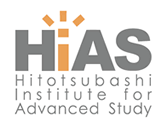Welfare Costs of Exchange Rate Fluctuations: Evidence from the 1972 Okinawa Reversion
Abstract:
The main tenet of the New Keynesian (NK) paradigm is that price dispersion caused by nominal price stickiness is the primary source of allocative inefficiency. This study empirically evaluates the welfare implications of NK models by observing how internal and external price dispersion responds to two types of large aggregate shocks: high inflation and sharp currency depreciation. For this purpose, we consider the history of US military deployment on a small southern island in Japan called Okinawa following the Pacific War. We investigate unique data variations in micro-level retail prices surveyed in Okinawa and mainland Japan before and after the Okinawan reversion to Japanese sovereignty in May of 1972. By considering the Okinawan experience of three currency regimes during the high inflation period of the early 1970s as valid quasi-natural experiments, we identify statistically significant
deteriorations of currency misalignment associated with the sudden exogenous large USD depreciation versus the JPY following the Nixon Shock. Furthermore, we observe that these massive aggregate shocks left the average absolute size of price changes mostly unchanged, but significantly increased the average frequency of price changes in Okinawa. Because a calibrated small open-economy menu cost model fits these empirical findings better than the Calvo model, the welfare costs of exchange rate fluctuations may be more elusive than suggested by the open-economy NK literature.
| Report No.: | HIAS-E-114 |
|---|---|
| Author(s): | Kazuko Kano (a), Takashi Kano (b) (c) |
| Affiliation: | (a) Waseda University (b) Hitotsubashi University (c) Center for International Research on the Japanese Economy, The University of Tokyo |
| Issued Date: | November 2021 |
| Keywords: | Currency regime; Currency misalignment; Welfare cost; Okinawan reversion; Menu cost model |
| JEL: | F31, F41, F45 |
| Links: | PDF, HERMES-IR, RePEc |











